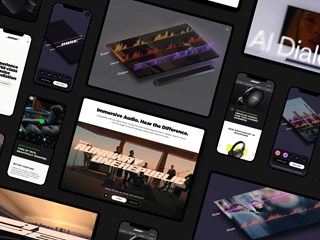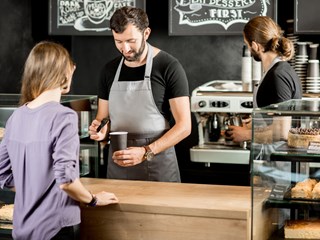16. März 2021
The COVID-19 pandemic has dramatically altered the way consumers shop. After the 2020 holiday shopping season proved the power of e-commerce, mobile apps, and the adoption of alternative fulfillment methods, many of us are wondering if we will see a big return to in-store shopping once the pandemic is behind us. If there’s one thing we know for certain, the COVID-19 pandemic has heightened the pressure on brick-and-mortar stores to find a new purpose beyond simply transacting.
Can physical stores compete with the convenience of online shopping?
The answer to this question depends on how you approach it. While consumers may be moving past purchasing non-discretionary items in store (after all, does anyone really enjoy handpicking their laundry soap and paper towels), convenience and shopping from home aren’t always one in the same. Even in the midst of a global pandemic, consumers still want to experience a sense of discovery.
An ICSC 2020 Holiday Weekend (US) survey revealed that among those who chose to shop in-store, 55% cited seeing, touching or feeling items as a reason. 54% mentioned getting items immediately, and 39% listed the convenience of one-stop shopping.
“I don’t think e-commerce to be all that convenient in the discovery phase. It’s great in the shipping and logistics phase but nothing beats [the discovery] of in-person shopping,” Trevor Sumner, CEO of Perch, said during a recent episode of the Retail Rundown Podcast.
Enhancing the discovery process
As curbside and BOPIS continue to transform the retail landscape, retailers will place a renewed focus on the in-store experience. While the demand for convenient shopping has become a major consumer trend, what remains is the need to interact and engage with products in a physical way.
 Prior to the pandemic, the showroom store model—a-la Neighborhood Goods and b8ta—were becoming increasingly popular among shoppers. In January of 2020, the high-sensory stimulating SHOWFIELDS in New York City was the talk of the National Retail Federation’s Big Show.
Prior to the pandemic, the showroom store model—a-la Neighborhood Goods and b8ta—were becoming increasingly popular among shoppers. In January of 2020, the high-sensory stimulating SHOWFIELDS in New York City was the talk of the National Retail Federation’s Big Show.
And while touch might still be a no-no for now, soft-touch experiences, such as digital signage, curated displays, and AR technology, continue to streamline the discovery process in physical stores.
“What makes a good experience? It’s a combination of reinvigorating how a consumer discovers new products, and that could either be by a well-merchandised display or a digitally-enhanced interaction in the store,” said industry expert and RETHINK Retail advisor Ricardo Belmar.
Leading the pack
In 2017, Target made headlines when it pledged a whopping $7 billion aimed at reinventing its in-store shopping experience.
Instead of typical wide, straight aisles, Target’s store layout would host aisles that curve from section to section. As customers travel down the store’s natural path, there would be carefully curated merchandise stations staged with products that display how the items could be used together.
 The result? Target’s foot traffic hit its highest rate since the company began reporting the figure in 2008.
The result? Target’s foot traffic hit its highest rate since the company began reporting the figure in 2008.
Having invested in design updates and digital innovation early on, Target is free to focus and press forward with its vision for the future—which can already be witnessed with its groundbreaking new partnership with Ulta Beauty.
“Target [is] taking convenience, value-based messaging, and the technology of its integrated loyalty apps to provide a better overall experience,” Sumner said.
So, what’s next?
Once updates to merchandising, fulfillment, and checkout technologies are in place, retailers should make personalization their north star.
To take personalization to the next level, Belmar suggested that retailers that sell apparel or home goods, such as Target or even traditional department stores, should consider leveraging purchase histories to offer hyper-personalized recommendations based-off what their customers already own.
 “Rather than focusing on sending an endless stream of discount offers via email to those customers, they should be having them come in-store so they can see, “Here’s the next latest and greatest thing,” Belmar said. “And by the way, it would work really well with those three items that are hanging in your closet right now.”
“Rather than focusing on sending an endless stream of discount offers via email to those customers, they should be having them come in-store so they can see, “Here’s the next latest and greatest thing,” Belmar said. “And by the way, it would work really well with those three items that are hanging in your closet right now.”
Now more than ever, the customer journey is blurring the line between digital and physical experiences. As we eventually move past the pandemic, retailers should continue to leverage their toolboxes to create consistent, convenient, and inspirational customer experiences in their brick-and-mortar stores.












